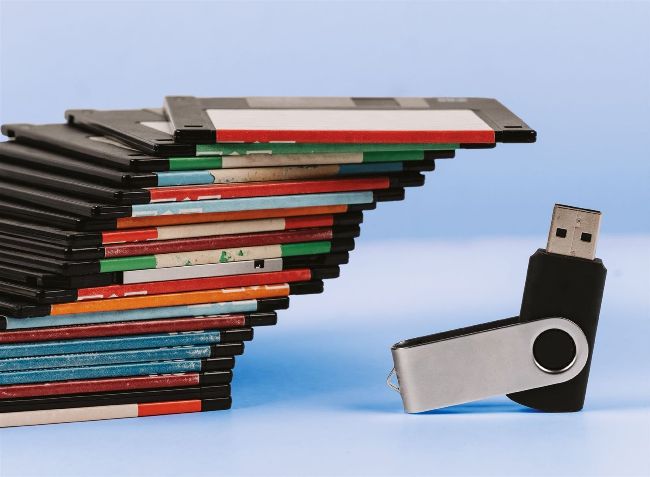HOW USB DRIVES WORK
The humble flash drive reinvented the way we store and transfer computer files
WORDS JACK PARSONS

Offering more storage space, the memory stick replaced the floppy disk in the 2000s
20 years ago, this gadget was a game-changer. The fact you think nothing of how commonplace they are today just goes to show what an impact they’ve had. Also known as a USB stick, flash drive or pen drive, a memory stick is a portable way of storing and transferring data. Its seemingly simple design is a clever combination of two technologies: flash memory and the universal serial bus (USB). Developed in the 1980s, flash memory was an innovative alternative to traditional hard drives and floppy disks. Unlike these storage options, flash memory didn’t have any moving parts. This meant it was less likely to break and could transfer data faster. The USB connector was created to make using a PC simpler. It replaced a bunch of different-shaped cables that you needed just to use your mouse, keyboard and printer with one type that could transfer both data and electrical power.